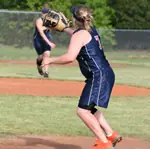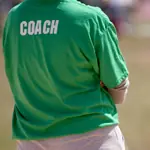
Young fastpitch hurlers can often get overwhelmed by what's expected of them when on the mound. But as the saying goes, analysis can lead to paralysis, and it's important to let young pitchers just go out there and "play" without sacrificing their quality of play.
Here are three key areas of pitching mechanic fundmanetals that can help young pitchers maximize their potential and have fun in the process.
Softball Pitching Tip No:1: The Right Grip
The fingers should be on or across the seams on the ball to form the grip. Just like an overhand throwgrip. (Four-seam grip or Two-seam grip depending upon objectives.)
Keys:
- Four-seam grip lends itself to straighter movement or a straight line
- Two-seam grip lends itself to more variation off that line
A four-seam grip is good for beginners. However, the key is a comfortable grip. Hand shapes andsizes are different; therefore, grip comfort varies based on hand size and shape.
The thumb and middle finger are the strongest digits on the hand. They establish the initial lineof force for the pitch.
When forming the grip across the seams (two or four-seams) the seam should fit into the 1st groove ofthe middle finger for maximum snap at release.
For a proper grip hold the ball in the fingers, not the palm of the hand. (Your pitcher should never experience any pain when throwing a pitch.)
Softball Pitching Tip No.2: The Right Stance
Begin with two feet touching the pitching rubber (ASA rules). This does not mean the middle ofboth feet need to be in the middle of the rubber.
It simply means that any part of each foot must touch the rubber. Teach your pitchers to begin with their throwing foot forward just likethey do when they throw overhand.
Keys:
- Start with both hands relaxed and down in front of the body, with the ball in the glove
- The feet should be balanced and approximately shoulder width apart.
- The ball of the pitching hand foot should be over the front of the rubber
- The toe of the back foot should be pushed against the back of the rubber
Beginners should make every attempt to learn to pitch from the center of the rubber (the line of force at its most centralpoint), with both feet pointed toward home plate.
The pitcher should take the signal from the catcher with their weight on the front foot, which allows the transfer of weightto the back foot.
While the weight is on the front the hands should come together and the pitcher must pause to comply with the pitchingrules. The weight will transfer to the back foot during this move. The rules also dictate that the front foot must remain in contact with the rubber during the transfer of weight.
- 1
- of
- 2








Discuss This Article